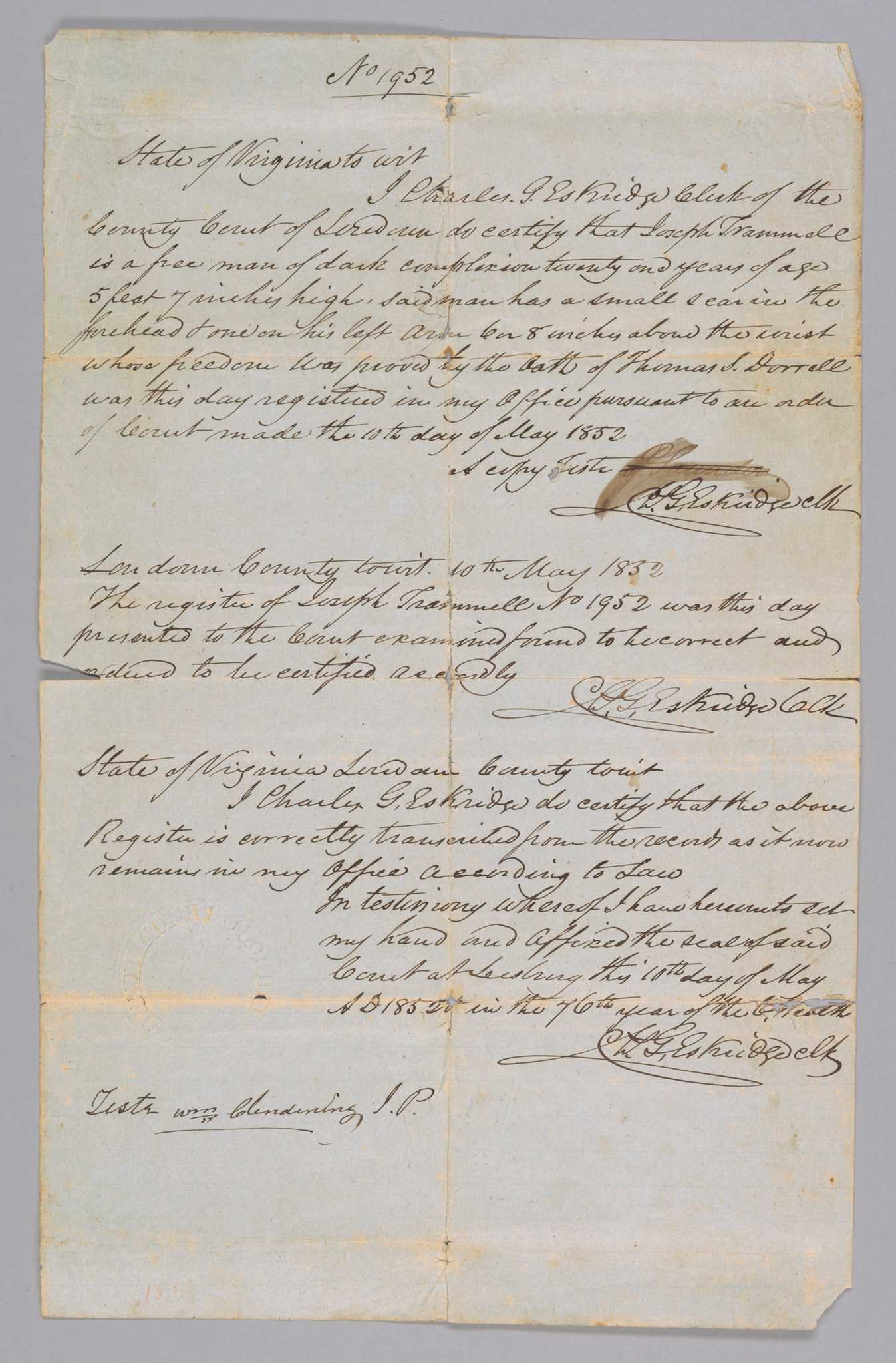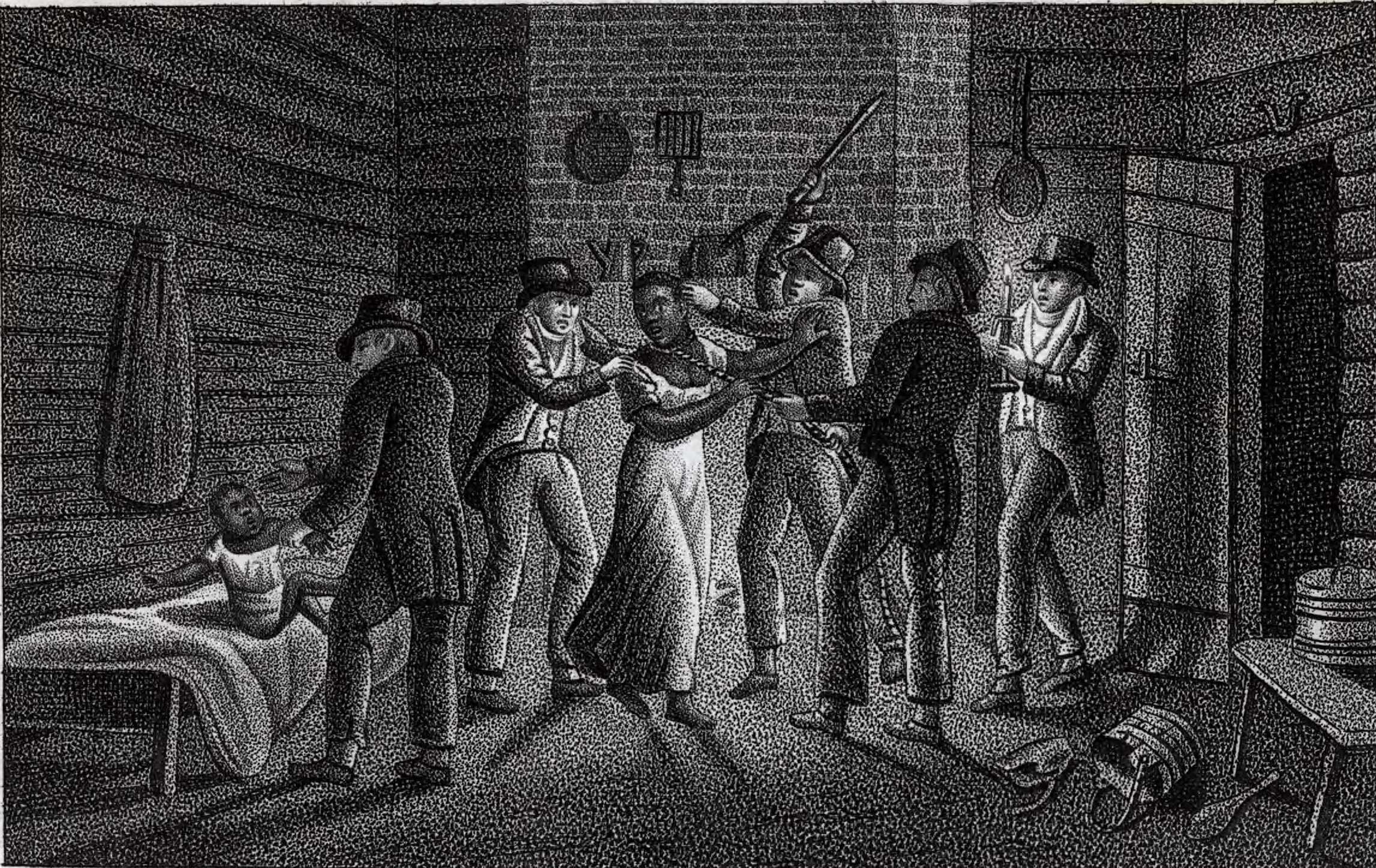Chapter 4
Free Communities of Color
After the Revolution, the free Black population grew exponentially. Whether by manumission, escape, military service, or birth, Black people found paths to freedom. In 1790 there were almost 60,000 free African Americans in the United States. By 1860, the population had grown to almost 500,000. Yet Black freedom was limited, and regulated. Free African Americans risked being kidnapped. They were required to carry badges or cards that identified them as free or face enslavement.
Facing racism, violence, and economic hardship, free Black people turned inward. They forged autonomous, tight-knit communities and neighborhoods—foundations for freedom.
Across the nation, free Black people created an infrastructure that helped them to survive. At the center was the Church, which guided all aspects of community life. It was an incubator for important institutions that strengthened and enriched the community. Free Black leaders organized fraternal orders, antislavery societies, and national conventions to uplift all Black people. Educational institutions like the Free African School and literary societies promoted intellect and pride. The Black press, including the first African American newspaper, Freedom’s Journal, was a vehicle to publicly challenge slavery and injustice. Black entrepreneurs, like the Toussaints of New York, provided philanthropic support.
Free African Americans responded to discrimination in different ways. From the impassioned cry of Henry Highland Garnet for “resistance” and the radical voice of David Walker, who encouraged violent resistance—to the global vision of John Russwurm, who supported emigration to west Africa—free African Americans built institutions and traditions that still stand today. They pushed the definition of freedom and forced the nation to face its contradictions.
The Limits of Freedom
For African Americans, the definition and application of freedom and equality was limited. Despite a web of restrictive codes and customs that discriminated against people of African descent, many were successful entrepreneurs and citizens. Free African Americans worked to secure rights for themselves and the freedom of enslaved people, knowing their own freedom was tenuous at best. They could be challenged at any time to prove their status as free people or risk enslavement.
Lunsford Lane
Lunsford Lane
Born enslaved in Raleigh, North Carolina, Lunsford Lane started a business selling tobacco and pipes across the state to a variety of people, including North Carolina legislators. He used the money he earned to purchase his freedom and spent years attempting to free his family. Because he was freed in New York, North Carolina law prohibited him from living in the state. Lane relocated to New York and Boston where he earned money speaking at abolitionist meetings.
Determined to reunite his family, Lane returned to Raleigh to purchase their freedom but was tarred and feathered for working with abolitionists. He survived the attack, purchased his family’s freedom, and settled in Massachusetts with his wife, seven children, mother, and father.
Very severe laws were passed, forbidding [free] coloured people to remain in the state. . . . My money was lost, my bright expectations were lost—my family was lost, and I was lost.
Lunsford Lane, 1842
Peter Bentzon: Making His Mark
Peter Bentzon’s Teapot
This rare and elegant teapot was made by renowned African American silversmith Peter Bentzon. Today his work is recognized as world-class craftsmanship for his designs, attention to detail, and quality materials. Fewer than ten of Peter Bentzon’s original pieces of crafted silver likely still exist.
Map of Colonial North America and the Caribbean, 1763
One of the earliest known African American silversmiths, Peter Bentzon was born free to a white father and a mulatto mother in the Caribbean. He was educated and trained as a silversmith in Philadelphia. Bentzon served an international clientele from his home offices in Philadelphia and the Caribbean. Despite the legal limits placed on free Black people, early Black entrepreneurs served as role models, philanthropists, and community leaders. Bentzon’s success afforded him opportunities to become his own man, even in a racist society.
Joseph Trammell
Handmade Tin and Freedom Papers
Joseph Trammell Descendant, Elaine Thompson
Free African Americans were required to register their free status with county courts. They secured Certificates of Freedom, also known as freedom papers. Carrying the certificate was crucial to avoid being mistaken as a fugitive and enslaved. Joseph Trammell registered as free in Loudoun County, Virginia, in 1852 and continued to do so every two years until 1865. Like other free African Americans, Trammell understood the fragile nature of his freedom. He created this handmade tin wallet to protect his precious documents that proved his freedom.
Descendants of enslaved African Americans are among the many stewards of important artifacts of the nation’s history. Elaine Thompson, descendant of Joseph Trammell, was the last in her family to serve as the steward of his wallet and freedom papers. She generously donated the significant collection to the National Museum of African American History and Culture in 2014. She passed shortly after the museum opened in 2016.
Featured Document
Joseph Trammell’s Freedom Paper
Joseph Trammell’s freedom paper sheds light on the limits of Black freedom in Virginia as established by law in the 1790s. Close inspection of the document reveals details about Trammell, the white citizen who testified on his behalf and the government regulated oversight of free African Americans.

